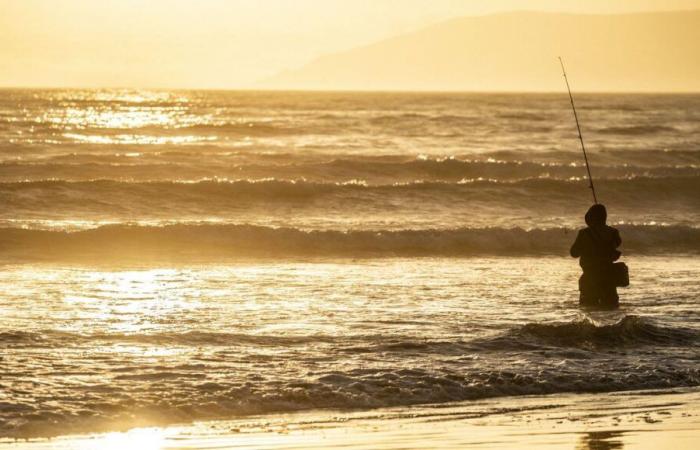Bruno Garcia, the fishing specialist from France Bleu la Rochelle, responds today in “Au fil de l'eau” to a listener about possible fishing techniques by the sea…Surfcasting
The fishing specialist from France Bleu la Rochelle Bruno Garcia responds in “Au fil de l'eau” to Emile who does not hide from us that he is a little grumpy. Areas for shore fishing are becoming more and more restricted. He explains to us that he does not have a boat and that he does not want to buy one, he adds that he does not like fishing in ports. Do you have a solution for Emile, Bruno?
Bruno Garcia : I agree with Emile, access to the sea is more and more difficult, if he does not want to fish in ports, I only see one solution for Emile and that is surf fishing – casting
In French please?
It’s a technique that means “throwing into the wave.” It is practiced from the shore and in the vast majority of cases from the beach, very often at night. The nights are not yet very cold and we can still enjoy spending them on the water's edge, well covered.
The objective is to track down nocturnal fish?
Fish whose activity is greater at night, sea bass, sea bream, conger eel, etc. most flat fish such as skate, flounder, sole. This fishing is very specific and therefore requires very specific equipment. If reels can be versatile for those who are just starting out, rods will be difficult to use in other conditions.
Let's then go into the details of this material to enlighten Emile
The rods I mentioned immediately must be between 4 and 5 m long, quite simply to be able to cast far but above all so that they allow, once the line is taut, the main line to position itself above the waves. The reel must have a large capacity at least 300 m in 35 hundredths. For my part, I have a preference for nylon which displays better elasticity unlike braid which leads to a lot of rigidity and above all a lot of unhooked fish. These 300 m of nylon will allow you to face a big fish because surfcasting has some nice surprises in store. Big rays, pretty bass, meager records are not uncommon. We still have in mind this fisherman who 4 or 5 years ago who caught this skinny 40 kg from the Martray beach on the Ile de Ré. Small equipment now, to cast far, that is to say between 100 and 150 m, it is necessary to use fairly heavy leads between 100 and 150 gr.
Why throw far?
We fish from a beach so if certain fish at daybreak or nightfall approach the coast this is not the case for all species and as the slope is very gentle the more you You will cast further, the deeper the area will be and you will hope for a nice fish which by definition will be more wary than a small one. There are of course exceptions but it is a theory that is regularly verified. The weight of the lead is dependent on the force of the wind and the power of the current. Many fishermen prefer pyramid or star-shaped sinkers that lock into the sand and allow self-hooking. I won't go into detail about the bottom line. There are as many techniques as there are fishermen. The hook will be chosen according to the bait used and not according to the fish sought.
So let's jump on the bait and give us the magic recipe for catching fish
I will not make this claim but if you want a lively fishing trip get yourself some hard or semi-hard worms or tube worms, all the fish are fond of them and there I can guarantee you that you will get bites. If, on the other hand, you prefer to target large fish, lamellar cephalopods will be a priority. The ideal is to have one rod per bait.
A little tip before leaving
Sea fishermen know that the worst nightmare for bait is crab and when you're worm fishing it's hell. Place a small floating bead on your leader which will make your bait take off and protect it from the damn pliers. This will not reduce its effectiveness in any way.






